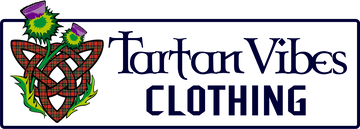Table of Content
Do Irish Wear Kilts?
Absolutely! The Irish wear kilts, but unlike Scottish kilts, which are tied to clans and tartans, Irish kilts primarily symbolize regional or national pride. Often seen in solid colors like saffron or green, they are worn for special occasions, reflecting Ireland's rich Gaelic heritage.
Introduction
When you think of kilts, Scotland likely comes to mind first. The iconic tartan patterns, closely tied to specific clans, have become synonymous with Scottish culture. But Do Irish Wear Kilts? Though less famous than their Scottish counterparts, Irish kilts are unique in Celtic history and culture, boasting their styles, colors, and meanings.
This guide will explore the fascinating history of Irish kilts, their design differences, their cultural significance, and how they are worn today. Whether you’re a history enthusiast, a prospective kilt wearer, or simply curious, this in-depth exploration will provide all the answers.
Origins of the Irish Kilt
Ancient Irish Brat: The Early Influence
Before kilts, as we know them today, existed, ancient Irish Celts wore the brat, a long, rectangular woolen cloak draped over the shoulders. This versatile garment provided warmth and protection against the elements. Over time, the brat became more stylized with intricate Celtic patterns and embroidery that denoted rank and tribal affiliations. While the brat lacked the pleated design of contemporary kilts, its flowing drape influenced the later development of the Great Kilt, serving as a precursor to Irish and Scottish kilts.
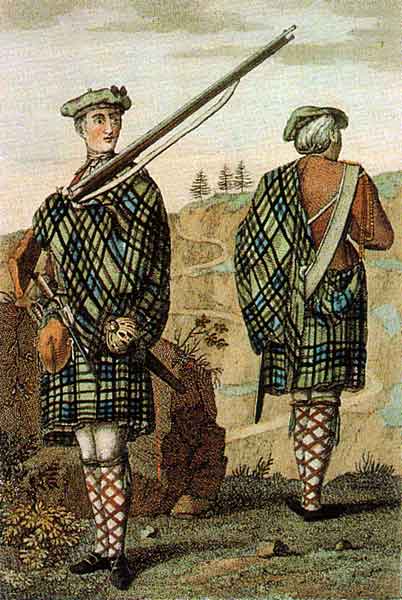
The Lein-croich: Early Irish Tunic
Another significant garment in Irish history was the Lein-croich, a long tunic worn by Gaelic nobility. This formal attire signified status and leadership within Irish clans. While the Lein-croich contributed to Ireland's traditional clothing heritage, it did not evolve into the modern kilt or adopt its pleated structure.

The Celtic Revival: Shaping Modern Irish Kilts
In the late 19th and early 20th centuries, the Celtic Revival movement sought to reclaim and celebrate Ireland's Gaelic roots. This cultural resurgence was driven by Irish scholars, artists, and political leaders who aimed to distinguish Irish traditions from British influence. Inspired partly by Scottish Highland customs, the Irish adopted the kilt as a symbol of Gaelic pride and identity.
The Saffron Kilt, characterized by its mustard-yellow color and shamrock appliques, became a prominent representation of Irish ceremonial attire. Initially introduced in military regiments, it symbolized regional and national unity rather than familial ties, as seen in Scottish tartans.
Today, while kilts are not as deeply embedded in everyday Irish culture as in Scotland, they remain significant. The kilt is a proud symbol of Ireland's rich Gaelic legacy, frequently worn at national events, cultural festivals, and military ceremonies.
Irish Kilts vs. Scottish Kilts: A Comparison
Tartan Design
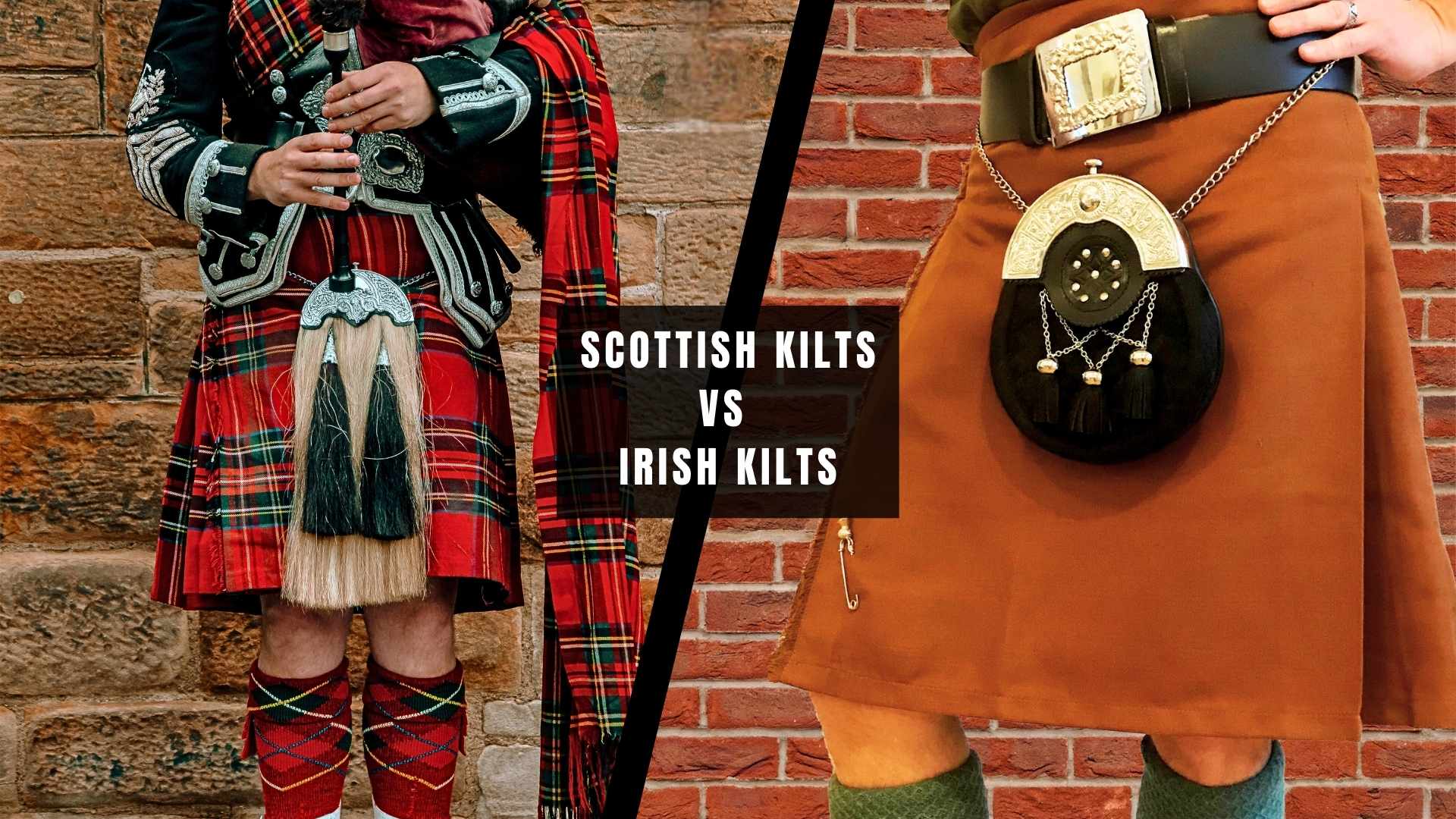
-
Scottish Kilts:
Scottish kilts are closely tied to family or clan heritage, with tartans as a visual identifier of one’s clan. There are thousands of registered Scottish tartans, each representing a clan, region, or even a specific individual. The craftsmanship behind Scottish tartans, with each weave carrying symbolic meanings, reflects the rich history of Scotland. Irish Kilts:
In contrast, Irish tartans represent counties, not families. For example, the Cork County Tartan symbolizes the region rather than a specific family lineage. Irish kilts are commonly found in solid colors, such as saffron, green, or orange, with the Saffron Kilt being the most well-known. In some cases, Celtic knot embroidery replaces tartan patterns, adding symbolic meanings tied to Irish folklore and cultural narratives.
Colors
Scottish Kilts:
Scottish kilts typically use vibrant tartan patterns with multiple colors in the weave, often associated with specific clans or regions. The variety of patterns and colors reflects the wearer’s connection to a particular group or historical event, making each tartan unique and personal to its wearer.Irish Kilts:
Irish kilts are typically solid colors, such as saffron, green, or orange. The most traditional Irish kilt is the Saffron Kilt, a mustard-yellow kilt often adorned with shamrock appliques. The vibrant colors of Irish kilts, influenced by Celtic art, symbolize different aspects of Irish heritage rather than being tied to a specific family.

Pleating
-
Scottish Kilts:
Scottish kilts are traditionally pleated to the back, with a focus on structural integrity and craftsmanship. The pleats are often stitched down to enhance the kilt’s shape and durability, showcasing the skill involved in its creation. This rear pleating adds both volume and a distinctive style to Scottish kilts. Irish Kilts:
Irish kilts often feature side pleating, which creates a distinct look compared to their Scottish counterparts. This variation in pleating not only differentiates the two styles but also adds to their unique aesthetic.

Cultural Significance
-
Scottish Kilts:
In Scotland, kilts are a ubiquitous symbol of clan identity and national pride. They are worn at a wide range of events, from weddings to Highland Games, and continue to be a key feature of Scottish ceremonial attire. Irish Kilts:
While kilts are less commonly worn in daily life in Ireland, they still hold deep cultural importance. Irish kilts are most often seen at national and cultural events, such as weddings, Irish dancing, and military parades. The Celtic Revival of the late 19th century solidified the kilt as a pan-Celtic symbol, and it continues to be worn with pride on special occasions today.
Curious to learn more? Dive deeper into the full comparison of Irish and Scottish kilts here: Irish Kilt vs Scottish Kilt: Unraveling the Differences
Types of Irish Kilts
There are several types of Irish kilts, each with its history and purpose:
Saffron Kilt:
The most traditional Irish kilt, made famous in the early 20th century and worn by the Irish military, is instantly recognizable due to its distinctive mustard-yellow color and shamrock designs.
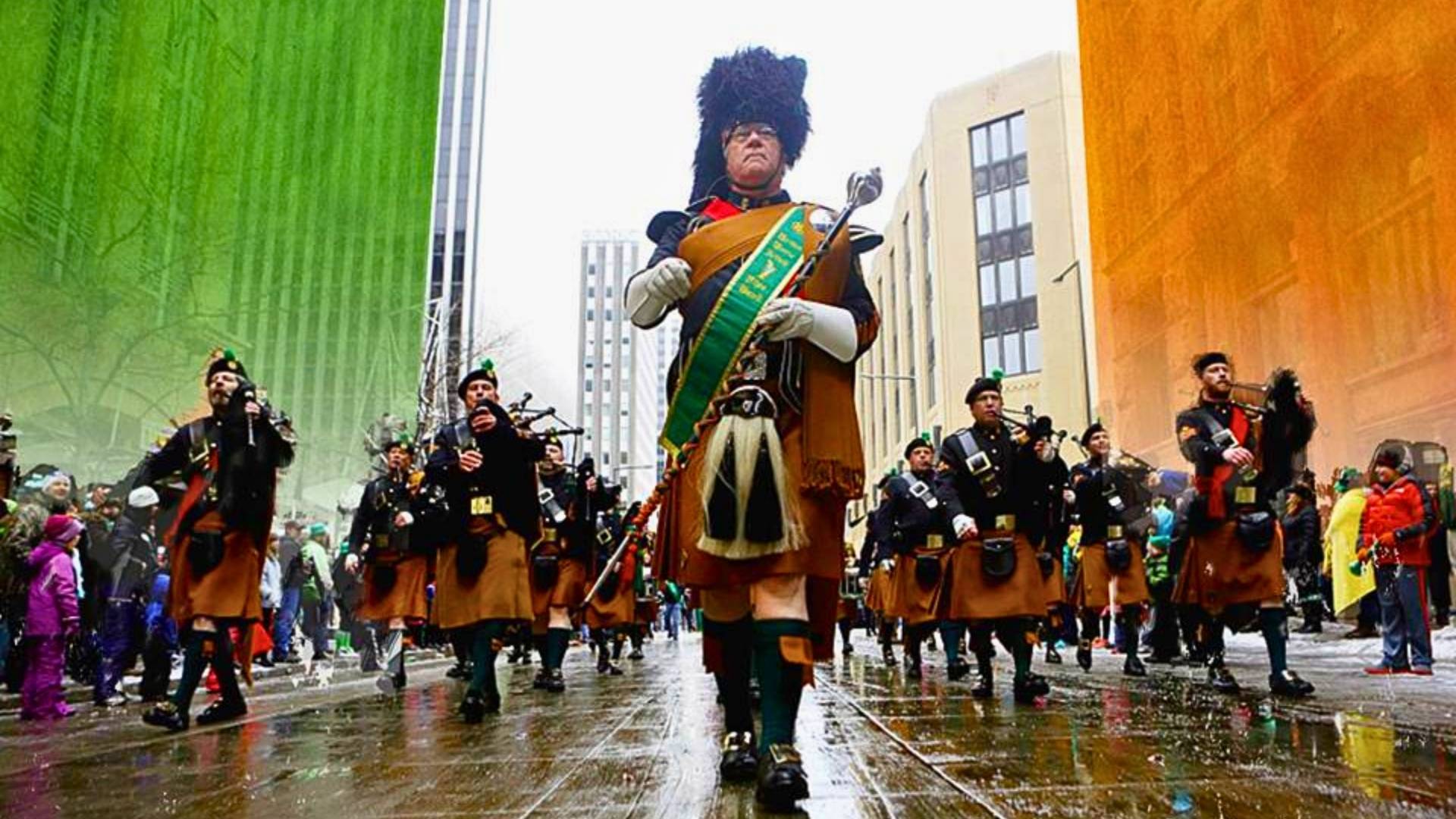
-
Great Kilt:
A large piece of wool wrapped around the body, worn with a shirt and jacket. This type of kilt is reminiscent of garments worn by both Irish and Scottish soldiers on the battlefield.

-
County Tartans:
Introduced in the 1990s, these tartans represent individual Irish counties rather than families. They provide a modern twist on the traditional kilt design.

-
Fly Plaid Kilt:
A formal style featuring a piece of fabric draped over one shoulder, fastened with a brooch. It’s a more elaborate version of the traditional kilt.
-
Casual Kilt:
A lighter, more modern version of the kilt, often worn at festivals and informal events.
-
Fly Plaid Kilt:
A formal style featuring a piece of fabric draped over one shoulder, fastened with a brooch. It’s a more elaborate version of the traditional kilt.

How to Wear an Irish Kilt: A Practical Guide
Mastering the art of wearing an Irish kilt is key to looking sharp and respecting tradition. With the right fit and thoughtfully chosen accessories, an Irish kilt outfit can showcase cultural pride and add flair to both formal and casual occasions.
Step 1: Fit the Kilt Properly
Position: Irish kilts should sit at your natural waistline, higher than where most trousers are worn.
Length: Ensure the kilt falls just above the knees, striking the perfect balance between tradition and modern style.
Step 2: Secure with a Kilt Pin
A kilt pin serves both practical and decorative purposes:
Function: Attach it to the front apron to prevent the fabric from flying open.
Style: To emphasize heritage, opt for pins featuring Celtic symbols or Irish motifs, such as shamrocks or harps.
Step 3: Accessorize Appropriately

- Sporran: A leather pouch worn at the front of the kilt, the sporran serves both practical purposes and adds decorative detail. It often features Celtic designs or shamrock motifs, emphasizing Irish heritage.
Brian Baru Jacket: This formal jacket, similar to the Scottish Prince Charlie jacket, is worn at high-end events. Paired with a bow tie and wing collar shirt, it completes the formal Irish kilt look.
Kilkenny Jacket: A versatile jacket worn for both casual and formal occasions. It’s typically paired with a waistcoat and necktie and often comes in shades of Irish green, adding to the traditional aesthetic.
Ghillie Brogues: These traditional shoes are worn with knee-high socks (often cream-colored for formal events or black for military occasions) and complete the kilt ensemble with a classic look.
To further personalize and enhance the kilt, you can add a variety of creative accessories:
Kilt Pins: These decorative pins, often featuring Celtic symbols or Irish designs like shamrocks, are attached to the kilt to add a touch of elegance or fun.
Kilt Sashes: A sash can be worn over the shoulder or around the waist, adding a sense of formality and highlighting specific colors from the kilt’s tartan pattern.
Kilt Hose: Kilt socks (hose) are worn with Ghillie Brogues, usually in cream or black, and often feature ribbons that match the kilt’s colors.
Kilt Tartan: A tartan scarf or plaid can be draped over the shoulder or knee to showcase your Irish pride and add a layer of traditional style.
Kilt Bow Tie: For a polished, sophisticated touch, a bow tie can be added to formal outfits, enhancing the overall aesthetic of the Irish kilt.
- Kilt Flashes: These small, decorative garters are worn with kilt socks, providing a pop of color and adding visual interest to the outfit.
Occasions for Wearing Irish Kilts
However, do Irish men wear kilts as commonly as Scots? While kilts are not as common in daily wear in Ireland as in Scotland, they are worn on several special occasions:

-
Weddings:
Many grooms choose to wear an Irish kilt to honor their heritage, adding a unique and personal touch to their wedding day. The kilt is often paired with a matching vest, formal jacket (like the Brian Baru or Kilkenny), and traditional accessories such as the sporran and Irish wedding ring. Guests may also wear kilts, showcasing Irish pride and creating a cohesive, elegant theme for the celebration.
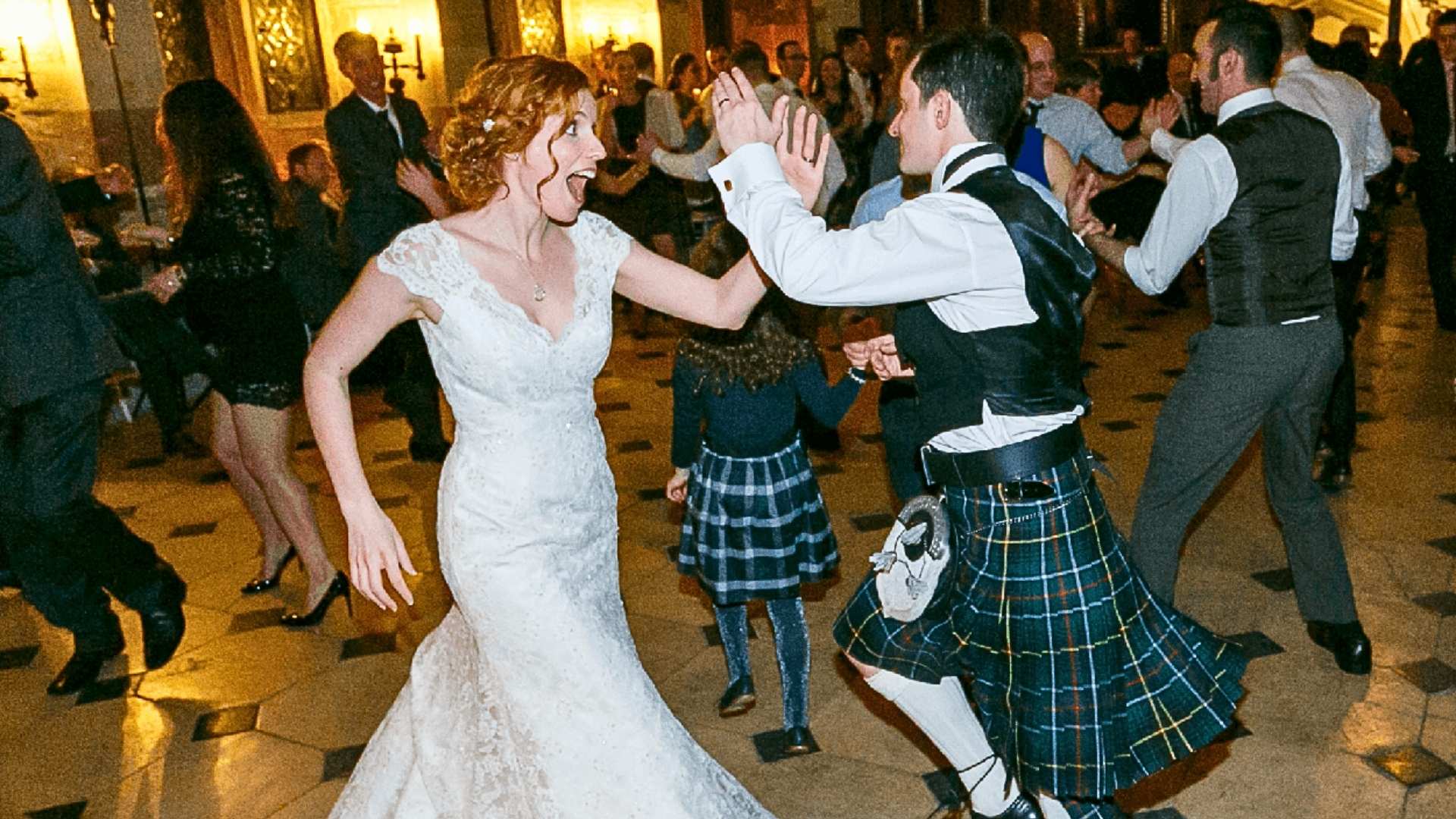
-
Irish Step-Dancing:
Kilts are a vital component of traditional Irish dance costumes. Paired with a crisp white shirt, vest, and tie, the kilt enhances the visual appeal of the rapid foot movements characteristic of step-dancing. The outfit not only contributes to the performance but also represents Ireland's rich cultural heritage.
-
Festivals and Highland Games:
Kilts are commonly worn during Irish cultural festivals and Highland Games, where they symbolize camaraderie and national pride. These events often celebrate Celtic heritage through competitions, music, and dance, making the kilt a fitting choice of attire for participants and spectators alike.

-
Formal Events:
The Irish kilt is frequently worn at formal events such as military parades, banquets, or state occasions. It exudes sophistication and cultural significance, reflecting the wearer’s respect for tradition. Paired with a formal jacket, Ghillie Brogues, and kilt hose, the ensemble makes a powerful statement of national pride. Special Gatherings:
In addition to weddings and festivals, Irish kilts are also worn at political gatherings, music festivals, and commemorative events. These occasions allow wearers to display their connection to Irish history and culture in a dignified and fashionable way.
Famous Irish Figures and Kilts
Throughout history, several critical Irish figures have been associated with wearing kilts:
Eamon de Valera: A prominent political leader and president, de Valera wore traditional Irish attire, including kilts, to symbolize his dedication to Ireland.
Michael Collins: Known for his role in Irish independence, Collins often donned traditional Irish clothing as a mark of his heritage.
Daniel O'Connell: Nicknamed "The Liberator," O’Connell wore kilts as a symbol of his pride in Irish identity during the 19th century.
Patrick Pearse: A key figure during the Gaelic Revival, Pearse introduced kilts to his students at St. Enda’s School, promoting pride in Irish culture and language.
Ready to wear your heritage? Dive into our Irish kilt collection and find the perfect match. 🙌
Conclusion
In conclusion, while kilts are often thought of as a Scottish tradition, they also hold a deep significance in Irish culture. The Irish kilt, especially the Saffron Kilt, reminds us of Ireland's rich Gaelic heritage and the Celtic Revival of the early 20th century. Today, Irish kilts are worn at weddings, festivals, and cultural events, making them an enduring symbol of Irish identity.
Frequently Asked Questions
Do Irish wear kilts or just Scottish?
There is some disagreement about when they became popular, but kilts are definitely part of Ireland's culture. Many consider that the Irish first played bagpipes, and the Scots first wore kilts. They are both Celtic nations, and in both countries, kilts are worn as a matter of pride.
Do Irish wear kilts to weddings?
Kilts are a traditional garment worn by both Scottish and Irish men. Many Irish men choose to wear kilts for special occasions such as weddings or formal events, as a way to celebrate their Irish heritage
Do Irish men wear kilts?
Yes, Irish men do wear kilts, especially during formal occasions, cultural events, and national celebrations like weddings, Irish dancing, and military parades.
Do the Irish wear kilts and play bagpipes?
Yes, both kilts and bagpipes are part of Irish cultural traditions, especially during parades, festivals, and military events. However, bagpipes are more commonly associated with Scotland.
What is the traditional Irish kilt color?
The traditional Irish kilt is often saffron yellow, but county tartans in green or orange are also popular.
What are Irish tartans?
Irish tartans represent counties, not clans, and are a relatively modern addition to Irish kilt traditions.
